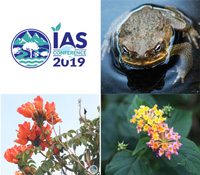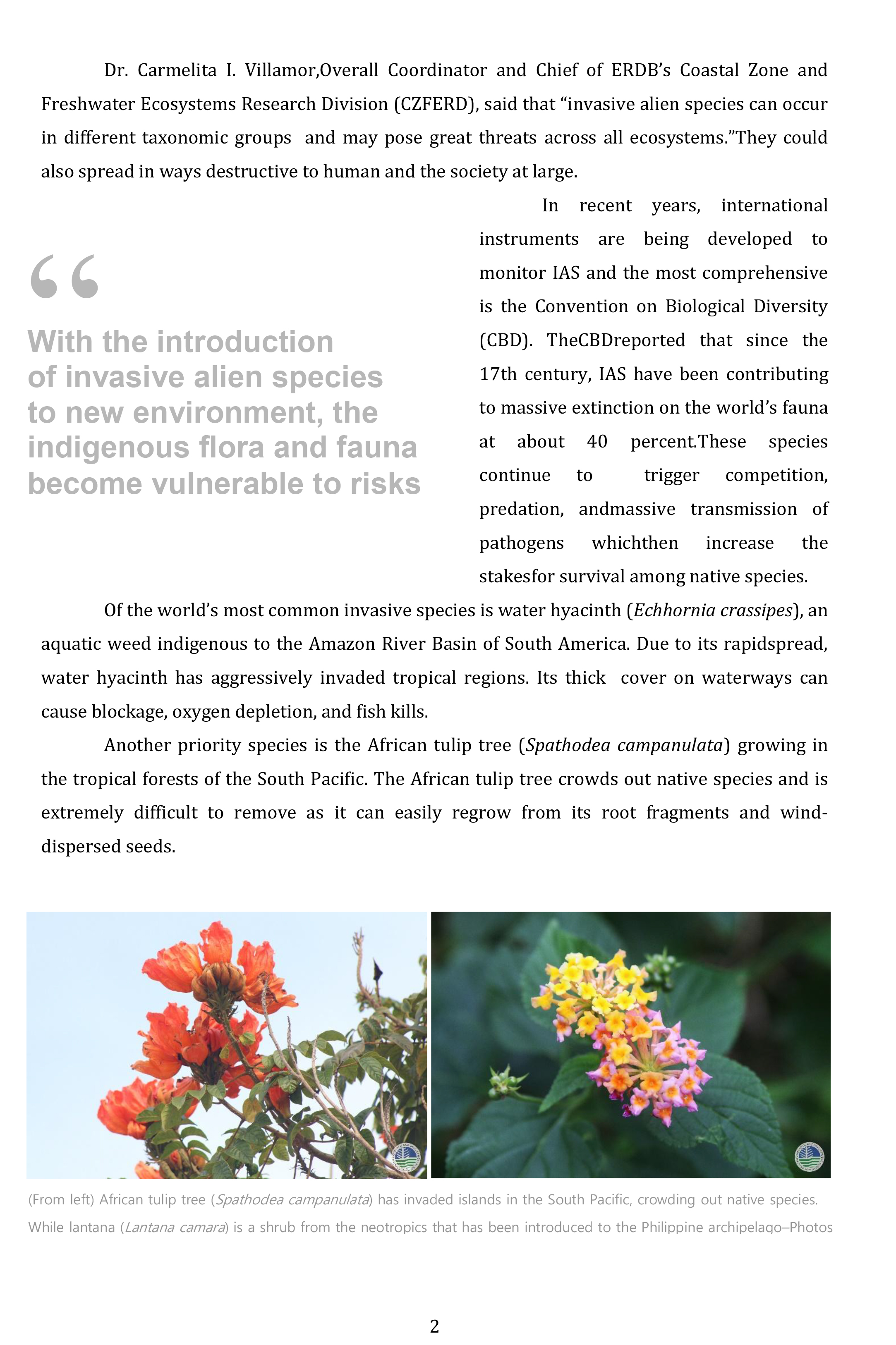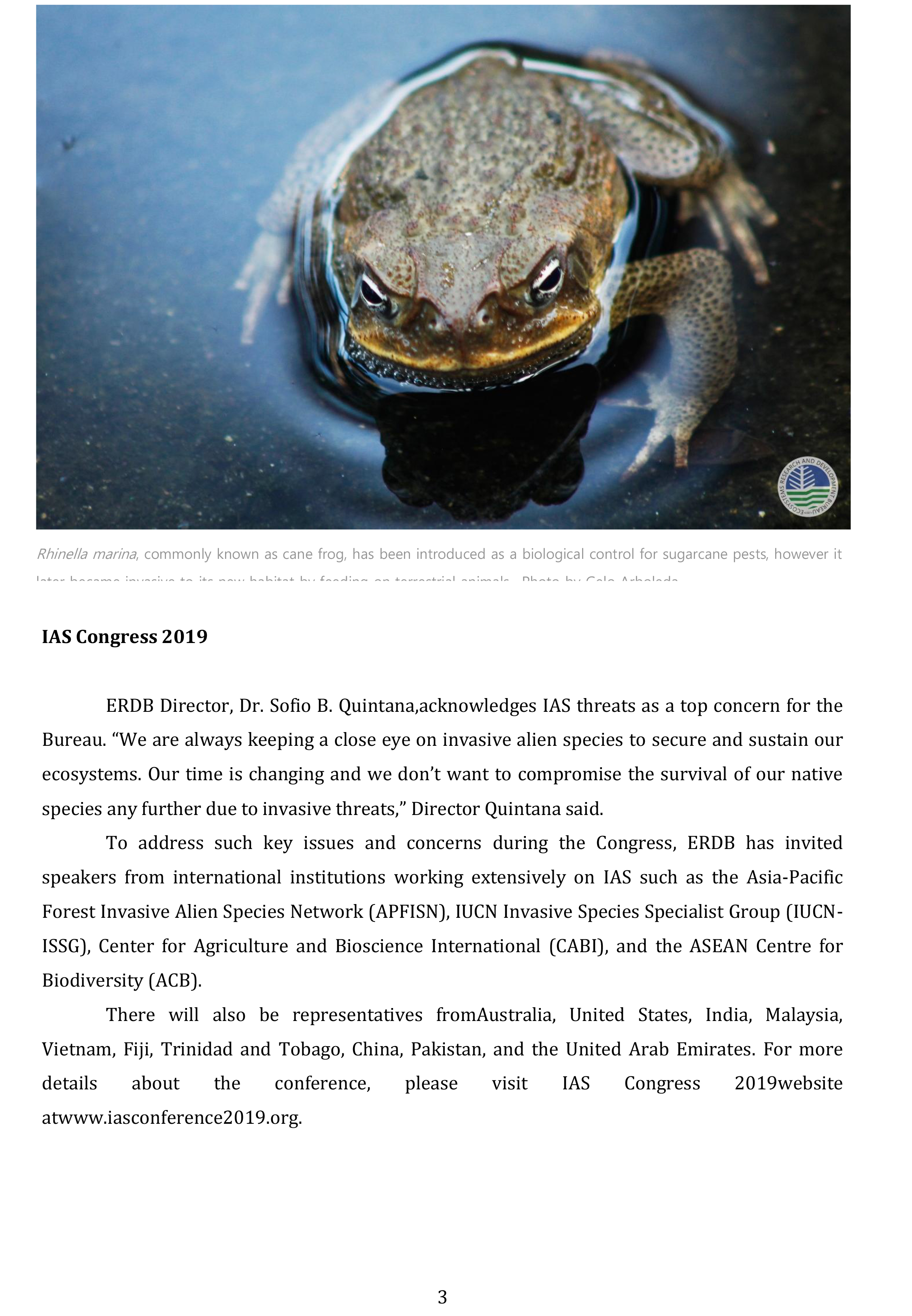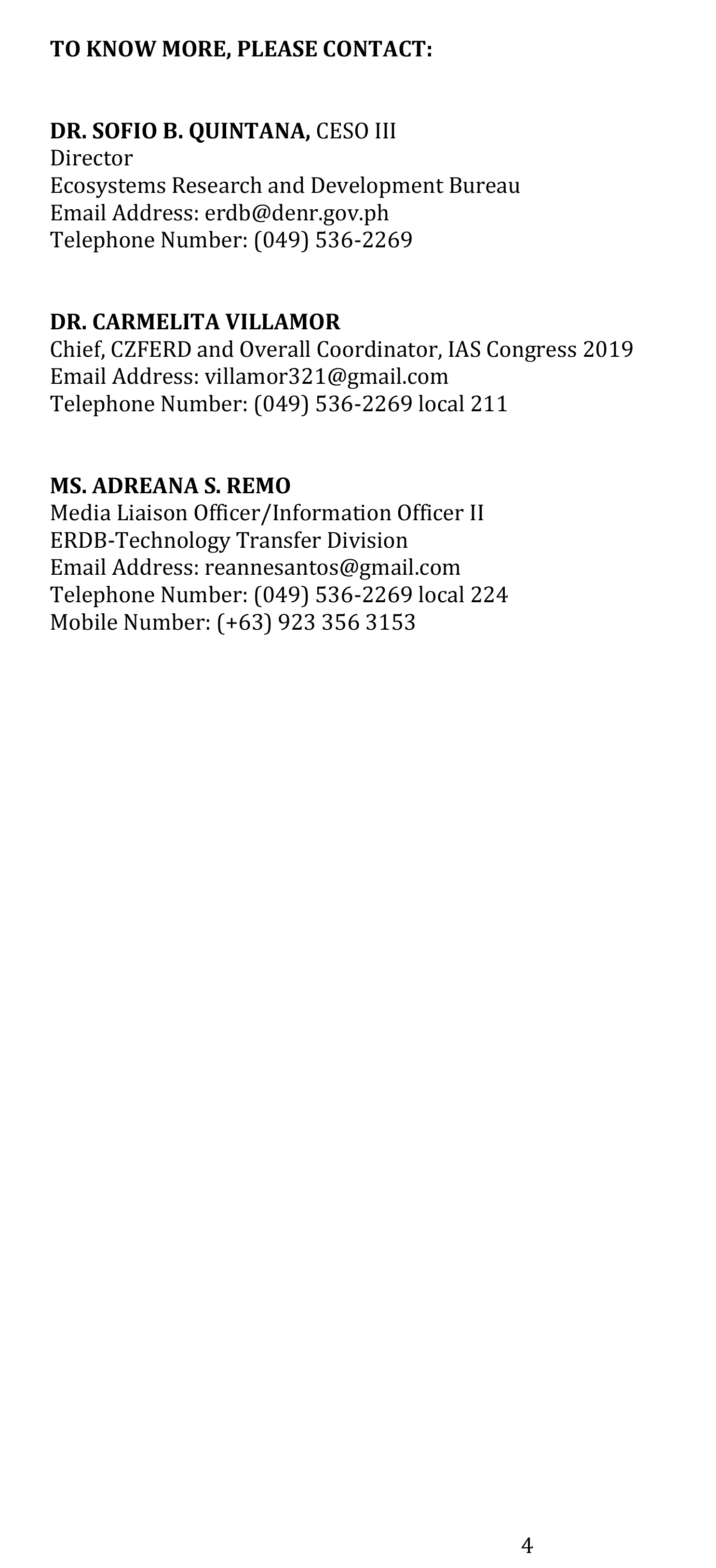Cimatu nanawagan para mapigilan ang pagdami ng invasive alien species sa Asia-Pacific
Nanawagan si Environment Secretary Roy A. Cimatu sa lahat ng eksperto at mananaliksik sa Asia-Pacific region na magkaisa upang makabuo ng solusyon na makapipigil sa negatibong epekto ng Invasive Alien Species (IAS) sa biodiversity at sa kapaligiran.
“I stand firm in promoting convergence of our research and development (R&D) efforts for a sustainable region-wide management of (IAS),” sabi ni Cimatu sa kanyang pagtanggap sa mga delegado ng international conference sa IAS management na ginanap sa Maynila noong Hulyo 9 hanggang 11.
“Let us continue with our pursuit for research-driven strategies and policies to effectively manage and conserve biodiversity for the good of humankind,” dagdag pa nito.
Ang tatlong araw na pagtitipon na tinawag na “IAS Conference 2019” ay nagtipon ng mga eksperto, mananaliksik, dialogue partners, environmental managers at iba pang stakeholders mula sa Asia-Pacific region.
Sa kanyang pangunahing talumpati na binasa ni DENR OIC Assistant Secretary for Staff Bureaus at Biodiversity Management Bureau (BMB) Director Ricardo Calderon, idiniin ni Cimatu ang pangangailangan ng sama-samang pagsisikap upang mabigyan ng solusyon ang IAS na sumasalakay at sumisira sa “nature’s ecological balance.”
“These IAS pose serious environmental concerns and are among the major threats to biodiversity,” pagdidiin pa ni Cimatu. “They cover a wide gamut of ecosystems from the terrestrial to aquatic environments, irreversibly impacting on biodiversity, agriculture, as well as food and water security.”
Ang IAS ay maaring halaman, hayop, pathogens at organismo na hindi nagmula sa isang ecosystem at maaring magdulot ng pinsala sa ekonomiya, kapaligiran at kalusugan ng mga tao.
Ayon sa International Union for Conservation of Nature, ang IAS ay species na mabilis na dumadami mula sa kanilang pinanggalingang lugar at nagbibigay ng panganib sa biological diversity. Ito rin ang pangalawa sa mga dahilan ng biodiversity loss sa buong mundo kasunod lamang ng habitat destruction.
Maliban sa Antartica at glaciated Greenland, 17 porsiyento ng kalupaan sa buong mundo ang sinasakop na ng IAS.
Ang mga IAS ay matatagpuan sa mga bansa sa Asia at Pacific kabilang na dito ang Pilipinas na naka-apekto sa pangunahing kalupaan, wetland, coastal, marine at estuarine ecosystems ng rehiyon.
Sa agrikultura, ang IAS ay ang mga tinatawag na non-indigenous weeds, pest, insects at iba pa na sumisira sa mga pananim at alagang hayop.
Para naman sa freshwater environment, ang kilalang “invasive species” ay ang carp na nagmula sa Europe na matatagpuan na ngayon sa halos lahat ng sulok ng mundo. Ang “alien invader” na ito ang tinaguriang pinaka“invasive in the world” na nakasisira sa marine life.
Sa Pilipinas, ang kinikilalang IAS naman ay ang American bullfrog at ang golden apple snail o mas kilala sa tawag na golden kuhol. Ang mga ito ay nagiging dahilan ng pagkaubos ng indigenous species sa kanilang natural habitat.
Ang IAS conference ay inorganisa ng DENR Ecosystems Research and Development Bureau (ERDB) at pinondohan ng Department of Foreign Affairs (DFA).
Ayon kay ERDB Director Sofio Quintana, ang naturang conference ang naging paraan ng mga technical experts upang makumpirma ang listahan ng mga IAS kabilang na ang posibleng banta at epekto nito.
Dagdag ni Quintana, ang pagpuksa sa IAS ay naaayon sa “Target 9 ng Aichi Biodiversity Targets sa ilalim ng Convention on Biological Diversity”.
Bukod sa Pilipinas, kabilang din sa mga bansa sa Asia Pacific na nagbahagi ng kanilang research papers sa conference ay ang India, Malaysia, Pakistan, Trinidad and Tobago, United Arab Emirates, United States at Vietnam.
Kabilang sa mga kinatawan ng Pilipinas sa ginanap na IAS conference ang mga eksperto mula sa DENR-BMB, University of the Philippines-Los Baños, ASEAN Center for Biodiversity, at Food and Agriculture Organization-Philippines. ###
- Details
- Parent Category: News & Events
- Category: Press Releases








